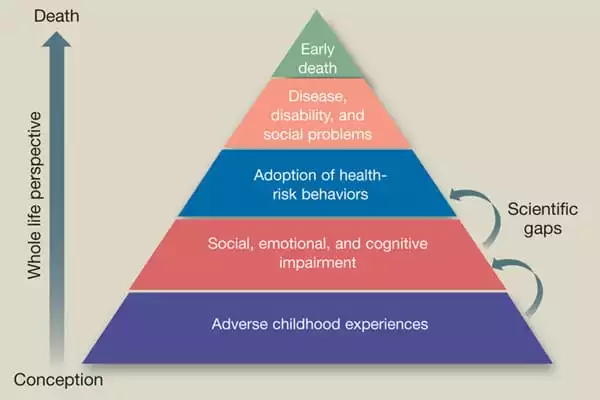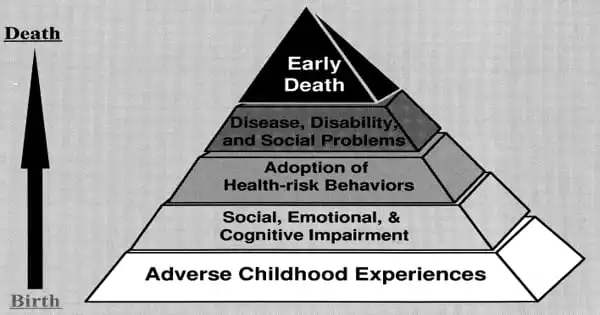Childhood emotional neglect occurs when parents or caregivers fail to respond to their child’s emotional needs. This form of neglect can have long-term as well as short-term, practically immediate implications. Understanding the causes of childhood neglect is critical for parents, teachers, caregivers, and others. It’s also useful to understand what it looks like in a child who is experiencing it, as well as what can be done to fix it or assist a child in overcoming it.
According to a new study, persons who reported sexual abuse before the age of 16 had a 2.6 times higher chance of dying in middle age – that is, between the ages of 45 and 58 – than those who did not disclose sexual abuse.
Children who are sexually or physically abused or neglected as children are more likely to die prematurely as adults, according to a new study conducted by researchers at UCL and the University of Cambridge that examined data from the 1950s to the present.
The study, published in the journal BMJ Open, discovered that persons who reported sexual abuse by the age of 16 had 2.6 times higher risk of dying in middle age – between the ages of 45 and 58 – than those who did not disclose sexual abuse.
Adults who reported physical abuse by the age of 16 had 1.7 times higher risk of premature mortality, while those who experienced neglect — measured using questionnaire responses from respondents’ parents and teachers during childhood — had a 1.4 times higher risk.
Our research demonstrates the long-term implications of specific types of child maltreatment and neglect. The findings are particularly significant because these early-life adversity are common, affecting millions of people in the United Kingdom.
Dr. Nina Rogers
The researchers also investigated the relationship between early-life socioeconomic deprivation and early death. They discovered that those who were disadvantaged at birth (those whose father’s work was classified as unskilled manual labor) had 1.9 times higher risk of premature mortality than other socioeconomic categories. The study relied on data from 9,310 people born in 1958 as part of the 1958 National Child Development Study, a nationally representative birth cohort study.
Dr. Nina Rogers, who conducted the research while at UCL and is now at the University of Cambridge, stated: “Our research demonstrates the long-term implications of specific types of child maltreatment and neglect. The findings are particularly significant because these early-life adversity are common, affecting millions of people in the United Kingdom.” [Note]
The researchers looked at socioeconomic and health-related characteristics to see whether they could explain why persons who were abused or neglected as children, or who were born into poverty, were more likely to die in middle age. They discovered that smoking appeared to be particularly crucial in explaining death among those who had been physically mistreated or neglected, as well as among those who were economically disadvantaged.
However, none of the examined factors, which ranged from mental health to obesity to risky behavior such as illegal drug-taking and problem drinking, appeared to account for the higher likelihood of early death for people who experienced sexual abuse as children.

According to senior author Dr. Snehal Pinto Pereira (UCL Surgery & Interventional Science), “This is the first study to separate the independent correlations between various types of child maltreatment and adult mortality. Importantly, very few researchers have looked into the long-term effects of childhood maltreatment. As a result, I believe our finding that neglected children had a 43 percent higher chance of dying before reaching adulthood underscores a vital component of child maltreatment where understanding about long-term effects is particularly important “Scarce.”
The prevalence of various early-life adversities ranged from 1.6 percent (sexual abuse) to 11 percent (psychological abuse) among the cohort members included in the study, with 10% classed as socioeconomically disadvantaged in early life.
At seven and eleven years old, each cohort member’s mother and teacher completed questions that allowed the researchers to determine if they displayed evidence of neglect. Cohort members were 45 years old when they were asked if they had ever experienced sexual, physical, or psychological abuse or seen abuse of others in their family before the age of 16. The researchers then followed the cohort members for 13 years, recording deaths along the way. Psychological abuse and witnessing abuse of others were not independently linked to a higher likelihood of early death.
The National Institutes of Health’s National Institute on Aging (NIA) in the United States, the Economic and Social Research Council (ESRC) in the United Kingdom, the Biotechnology and Biological Sciences Research Council (BBSRC), and the Medical Research Council in the United Kingdom funded the research (MRC).
*Note* According to the Office for National Statistics, one in every five adults aged 18 to 74 years experienced at least one form of child abuse before the age of 16, whether it was psychological abuse, physical abuse, sexual abuse, or witnessing domestic violence or abuse, according to the Crime Survey for England and Wales in 2019. (8.5 million people).














